Beyond fabric and form
Pakistan's designers transform Shanghai's runway into a celebration of shared heritage and modern artistry along the
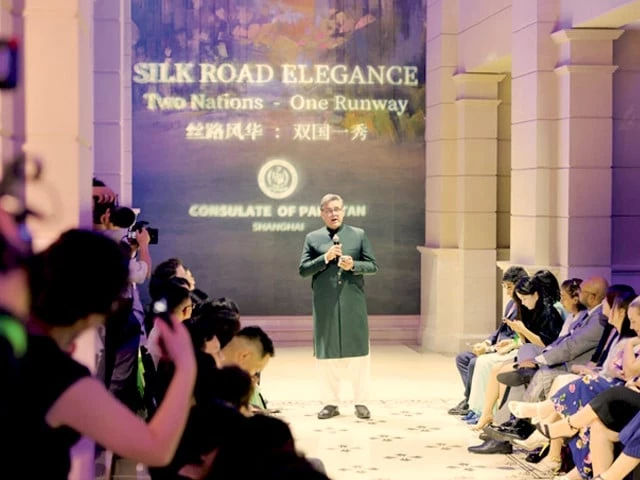
The spirit of the ancient Silk Road was reborn on a glittering Shanghai runway last week, as Pakistan's leading fashion creators presented a powerful showcase of craftsmanship and cultural dialogue during the debut of 'Silk Road Elegance: Two Nations, One Runway.'
The event, directed by Adnan Ansari of Rawayiat, brought Pakistan's artistry to the heart of China's fashion capital, transforming the catwalk into a living narrative of friendship, creativity and shared heritage.
Set against the grand backdrop of Shanghai Fashion Week (SHFW), - a global platform known for its experimental energy - the showcase proved that fashion, beyond its aesthetics, remains one of the most eloquent languages of diplomacy.
The evening unfolded through four distinct artistic interpretations of Pakistani design, each collection articulating a facet of the nation's cultural and contemporary identity.
Opening the runway, veteran designer Maheen Khan delivered a masterful fusion of traditional motifs and modern couture. Drawing inspiration from Pakistan's iconic truck art and indigenous embellishments, her creations married intricate embroidery with streamlined silhouettes, blending Eastern storytelling with Western poise.
Following her, Moazzam Abbasi channelled the spirit of Sindh through the timeless craft of 'Ajrak'. His collection featured hand-woven organic cotton dyed with natural pigments, reimagining geometric motifs for modern wardrobes while maintaining their earthy authenticity. The interplay of symmetry, tone, and texture underscored the continuity of a tradition that has survived centuries.
Jewellery brand Winza brought another layer of brilliance to the showcase, dazzling the audience with emeralds sourced from the Swat Valley. Each piece reflected the fine mastery of Pakistani gem-cutting artistry, with a bridal collection that married royal opulence and artisanal restraint. The luminous green stones - long celebrated in Pakistan's northern valleys - stood as a reminder of nature's wealth and the craftsmanship that refines it.
The finale belonged to 'The Factory Edit', which introduced a compelling statement on sustainability. Presenting upcycled garments made from discarded textiles, the brand combined conceptual innovation with eco-conscious design.
The result was a poetic reminder that modern fashion can sustain elegance without waste - a message that resonated strongly with the global fashion community increasingly attentive to environmental ethics.
Throughout the evening, the atmosphere pulsated with traditional Pakistani rhythms and ambient lighting that mirrored the country's landscape - from desert golds to emerald greens. The immersive staging invited the audience to journey through Pakistan's rich visual and musical tapestry.
The event drew nearly 180 distinguished guests - diplomats, fashion critics, entrepreneurs, and cultural figures - highlighting how design continues to operate as an instrument of connection between nations.
Pakistan's Ambassador to China Khalil Hashmi inaugurated the event with remarks that captured the show's deeper symbolism. "Tonight demonstrates that the Silk Road legacy continues not through ancient caravans, but through shared creativity and mutual appreciation," he said, receiving applause from the assembled crowd.
Among the attendees was entrepreneur and architect Huang Weiguo, Chairman of Shanghai Yuanyi Industry Co, Ltd, who underscored fashion's emerging role in cultural diplomacy. "It is not just about clothes," he noted, "but about how ideas travel, how traditions adapt, and how friendship finds expression in form."
Closing the evening, Pakistan's Consul General in Shanghai, Shehzad Ahmad, reflected on the renewed relevance of the Silk Road connection, describing events like this as "threads weaving contemporary meaning into centuries-old ties."
The 'Silk Road Elegance' showcase unfolded within the broader spectacle of SHFW, a fashion calendar highlight that continues to redefine Asia's creative identity. According to Jing Daily, SHFW has evolved into one of the most influential global fashion gatherings, yet its scale - and cultural intensity - make it unlike anything in Europe's traditional fashion capitals.
This season's Spring 2026 edition sprawled across multiple venues and formats, from runways to immersive installations, and featured nearly 1,000 fashion, fragrance, and lifestyle brands. Half of those exhibitors hailed from outside China, a record that underlined the week's expanding international pull.
"The overall scale of participating brands at Shanghai Fashion Week, their stage of commercial development, and the richness of Shanghai's fashion retail market all exceeded our expectations," said David Dessureault, general manager of business development at Chalhoub Group, attending from Dubai.
The festival's reach extended far beyond the city's glimmering showrooms. On China's social platform Xiaohongshu (RedNote), the hashtag "ShanghaiFashionWeek" amassed an extraordinary 269.6 million reads - an indication of how the event now functions as both a trade fair and cultural phenomenon.
While global brands like H&M and Adidas made headlines with celebrity-filled events and high-impact collaborations, it was the diversity of perspectives that defined the week. Emerging Chinese designers such as Jacques Wei, Mark Gong, and the design duo Shushu/Tong captivated audiences with experimental styles that married Eastern subtlety with Western flair.
At the same time, luxury labels from Japan, South Korea, and Southeast Asia injected regional freshness, echoing the week's ethos of inclusivity and creative dialogue. Amid this international energy, Pakistan's participation carried its own quiet power.
Its fashion story - rooted in heritage yet forward-looking in form - stood as an emblem of how smaller fashion economies can project soft power on the world stage. Rather than competing for visibility, Pakistan's showcase invited reflection, intimacy, and appreciation - qualities often missing in the spectacle of global fashion.
Madame LV (Lv Xiaolei), Secretary-General of the Shanghai Fashion Week Organising Committee and Executive Vice-Chairman of the Shanghai Fashion Designers Association, noted the launch of the SFDA Creative Talent Initiative, uniting competitions for emerging designers and awards for established ones. "Together, they form a structured system that nurtures creative forces shaping the future of China's fashion industry," she explained.
This commitment to fostering innovation resonated strongly with the collaborative ethos of 'Silk Road Elegance'. Both embodied an understanding that fashion's true power lies not in commerce alone, but in its ability to translate culture into beauty, and beauty into connection.
For Pakistan, the night in Shanghai was more than a show - it was a statement. Each embroidered motif, each gemstone shimmer, and each sustainable silhouette reflected a nation's evolving creative confidence.
It was fashion as language, diplomacy, and continuity - reimagining the ancient Silk Road not as a relic of trade routes, but as a living passage of imagination and mutual respect. As the lights dimmed and applause echoed through the Shanghai hall, the essence of the evening lingered: Pakistan's fabric and China's runway had woven a story of shared artistry.
In that fusion of threads, textures and dreams, the legacy of the Silk Road - once a path for merchants - found its modern travellers in designers, creators and cultural storytellers. And somewhere between the shimmer of emeralds and the rustle of silk, it became clear that in the ever-evolving world of fashion, the most enduring couture is friendship itself.

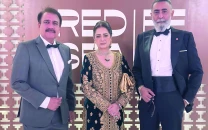
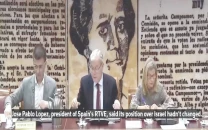
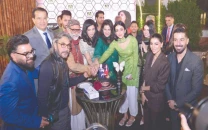










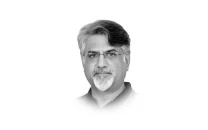





COMMENTS
Comments are moderated and generally will be posted if they are on-topic and not abusive.
For more information, please see our Comments FAQ